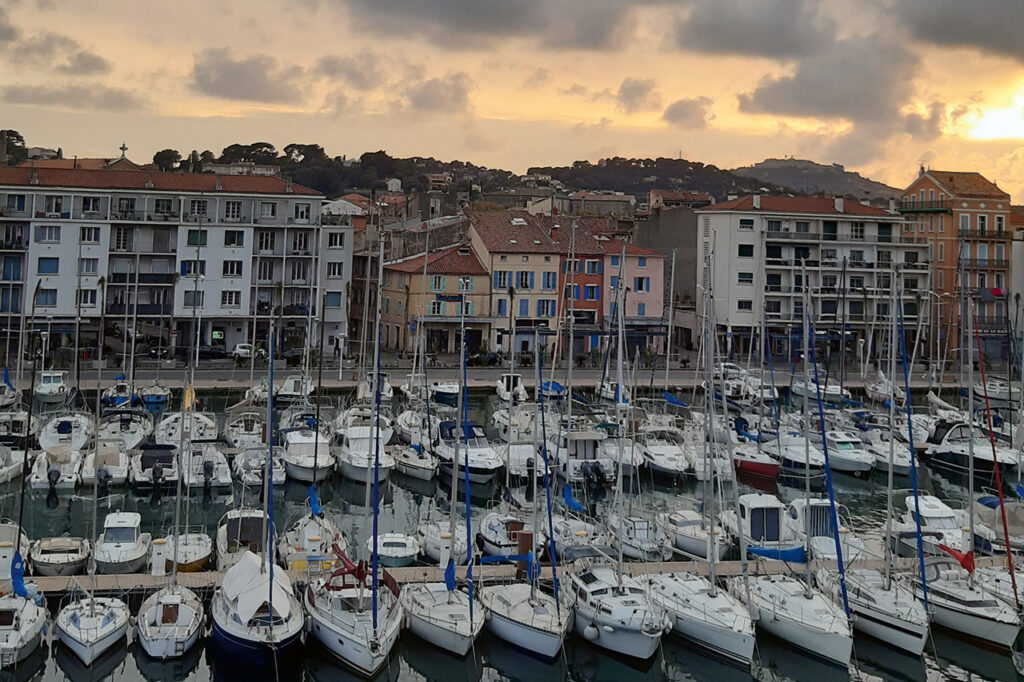[LUM#18] Stop at the port
These are unique little pockets of ocean, home to unique inhabitants. Frédérique Viard, researcher at ISEM*, is interested in the biodiversity of port environments, where pressures are high and evolutionary processes are sometimes rapid.

Concrete, noise, artificial light, hydrocarbons; a suburban atmosphere that actually describes... a port. "A truly unique marine habitat," notes Frédérique Viard. A unique ecosystem that the biologist from the Institute of Evolutionary Sciences in Montpellier is studying to better understand who inhabits it. "Ports are a new urbanized marine habitat that will encourage the establishment of original assemblages of species adapted to these particularly selective environments," says the specialist, who navigates between ecology and evolutionary biology.
This seemingly hostile environment is a "hotspot for introduction,"where species from elsewhere arrive and settle."This phenomenon accelerated during the20th century with the globalization of maritime trade, "says Frédérique Viard. "In ports today, up to 20% of certain taxonomic groups are introduced species, compared to well under 1% innatural ecosystems." Ballast water, the hulls of merchant ships and pleasure boats, and even the smallest crevice on a vessel can provide a refuge for these stowaways. "Ships are like floating islands. Canadian scientists have counted up to 175 different species on the hull of a single merchant ship!"says the biologist.
Redistribute the cards
Once they arrive at their destination, these non-native species mix with local species, creating "heterogeneous assemblages of native and introduced species that could never have formed naturally without human intervention." But once they come together, they can redistribute the cards of species richness and genetic diversity. "Some species are distant cousins of local species, separated for millions of years, which now find themselves together in ports and sometimes manage to interbreed, giving rise to new lineages," explains Frédérique Viard, who describes, for example, the unlikely union of two strange underwater animals that were not supposed to meet: the Asian ciona and its European cousin, which can produce hybrid offspring. Other researchers have also observed genes in a species of fish that provide protection against the toxicity of hydrocarbons, which is useful to say the least when living in a polluted environment; however, these genes were transmitted by a closely related species that had been introduced, in which this adaptation had appeared previously.
Biodiversity in the making
"These changes can be rapid, because selection pressures are strong in portsand populations are genetically diverse," the biologist points out. These characteristics make ports veritable open-air laboratories for ecologists and evolutionary biologists. To better identify the new species introduced into these unique laboratories, researchers use environmental DNA: they collect DNA left behind by living organisms in seawater samples and compare it with data from reference databases to determine which species it belongs to."Many ports on the English Channel, Atlantic, and Mediterranean coasts have been sampled as part of the MarEEE project," explains Frédérique Viard, who believes that ports are "the crucible of a new biodiversity in the making."
Listen to:
- In A l’UM la science, Nicolas Bierne, a researcher at ISEM, talks to us about the strange underwater fauna found in ports.
- Find the podcast on your favorite platform.
*ISEM (CNRS, UM, IRD, CIRAD, EPHE, Inrap)
Find UM podcasts now available on your favorite platform (Spotify, Deezer, Apple Podcasts, Amazon Music, etc.).